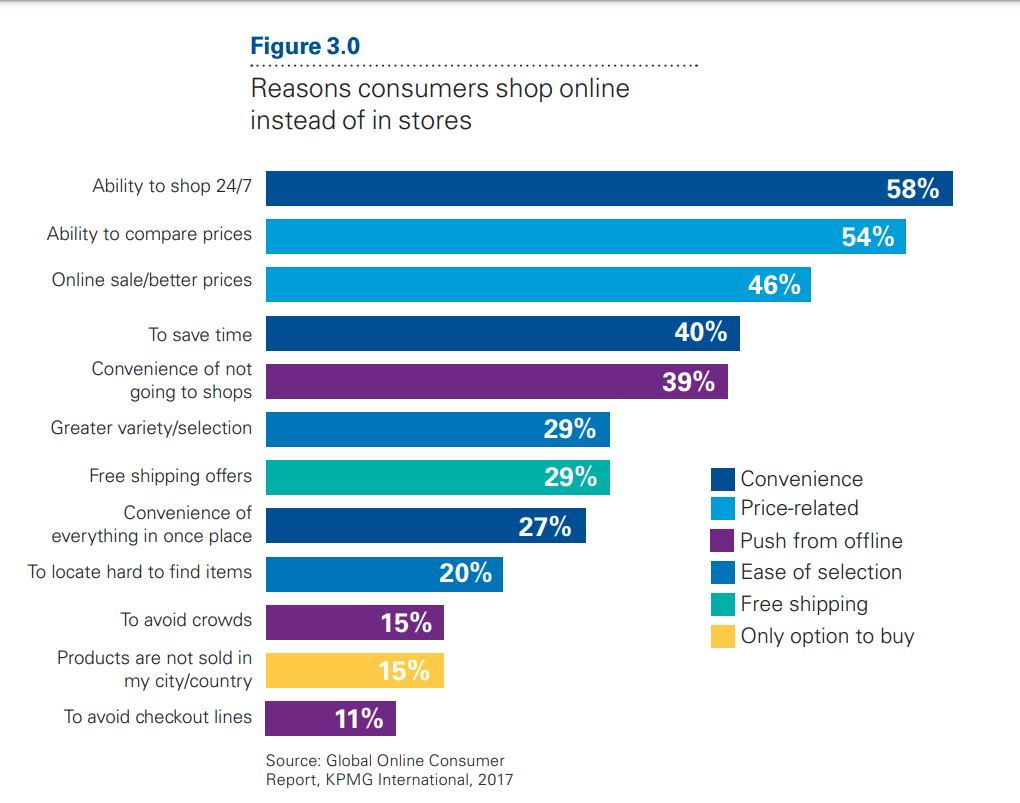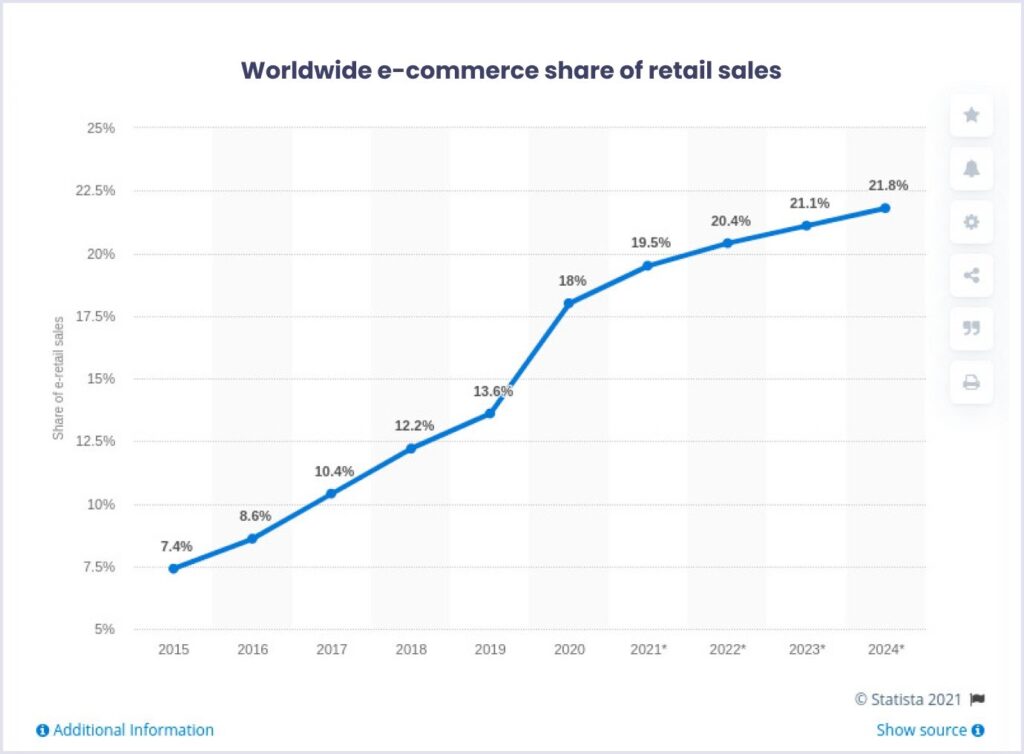Today, it is hard to tell where exactly the customers make purchase decisions staying “always online.” So businesses understandably want their set of products to be sold anytime, anywhere.
Whereas a marketplace solution makes total sense, actually those platforms are divided into two main types: single-vendor and multi-vendor. In this article, I have prepared an overview of how to classify them. Here, you will find out the major differences and, likely, the answer on how to make a marketplace website that suits you best.
Drives for customers to buy online
Today an online marketplace is the key component of e-shopping. Below, you can see the main reasons customers jump online to buy goods:

Convenience and price comparison, predictably, are among the most crucial drives. Notably, the chart also stresses free shipping importance.
Besides, nowadays, customers’ experience is getting more personalized thanks to machine learning. In practice, website users see items tailored specifically to their needs or based on their purchasing (and viewing) history.
As a side note, I have to admit that e-commerce has gained huge popularity with the advent of big tech companies like Amazon. And recently, social media have been playing a leading role in boosting some of the platforms. This is true for Facebook Marketplace in particular.
Here, you see how worldwide e-commerce share has been increasing across the years:
In fact, there’s more to come. At-home quarantine lifestyle has shifted shopping habits in all possible ways.
Outdoor shopping malls posted a dramatic decrease in foot traffic during a peak of the Covid-19 pandemic. Tremendous amounts of people are simply used to purchasing online following the quarantine.
Definition: single- and multi-vendor marketplace
Now, let’s jump straight to the topic – the differences between a single- and multiple vendor marketplace.
Single-vendor marketplace
Let’s start with the easiest one. A single-vendor marketplace is a platform with a single vendor offering their goods or services. Thus, you have two sides involved in the process: a seller and a buyer.
The product pages are managed by a person running a platform. It is what it sounds like – a website where a single company sells their products. Therefore, a supplier has no dependency. An owner of such a marketplace is able to create a strong inventory control.
However, the single-vendor marketplace doesn’t offer the same range of products. So unlike multi-vendor platforms, it requires far greater promotional effort.
Multi-vendor marketplace
A multi-vendor marketplace is a hub of sellers across many items ranging from household equipment and clothes to books and desktop sets. It is fair to say it is very much like a physical mall with different people running their shops under one roof.
An example that instantly comes to mind probably would be Amazon, as it holds on top of the largest e-commerce companies.
Vendors generally manage product pages by themselves. To do so, they have to enter a website via their special accounts. However, in most cases, the listed goods become visible once getting approved by an admin.
So unlike the previous type, this marketplace involves one more side in the workflow process – an administrator.Product lists
Unlike a single-vendor type, a platform with multiple vendors provides a wider choice of products. Importantly, sometimes it means allowing buyers to compare prices.
Traditionally, the product pages are managed by sellers, just like with a single-vendor e-shop. In some cases, however, products become visible once they are approved by an admin. Amazon, for instance, is known due to its listing restrictions. Meaning that vendors can’t list certain goods without the prior approval.
Feedback system for single- and multi-vendor marketplace
Word of mouth is the type of social proof people generally rely on. Luckily, almost every marketplace enables a customer to leave feedback for a seller or a product. Importantly, it makes sellers come up with new ideas on how to improve their services and quality of their goods.
Regardless of the type you choose, the more feedback the platform or seller has, the more viewed it might become.
Summing up
It’s time to wrap up thoughts on single- and multi-vendor online marketplaces. In the section below, you see major differences between those types. I have to admit they are very noticeable when it comes to website development and scalability.
A single-vendor marketplace, as the name suggests, features one seller option. A multi-vendor site, in its turn, has a greater choice on it. Consequently, the second type offers a much wider variety of items.
As a single owner running a website, you can’t make the price tags lower a certain threshold. Your customers are likely to shop around. They might go for another e-shop if there’s a more affordable option.
Nevertheless, both marketplace types provide equal entry into e-commerce in terms of cost-effectiveness. To create a multi-vendor marketplace website, you would need quite a large budget. However, to make a single-vendor platform strive, you have to keep in mind additional expansions on marketing.
Ultimately, under one person’s authority achieving high business growth becomes slightly more difficult. Meanwhile, it will also take a big amount of time if your website doesn’t involve a third-party seller.







